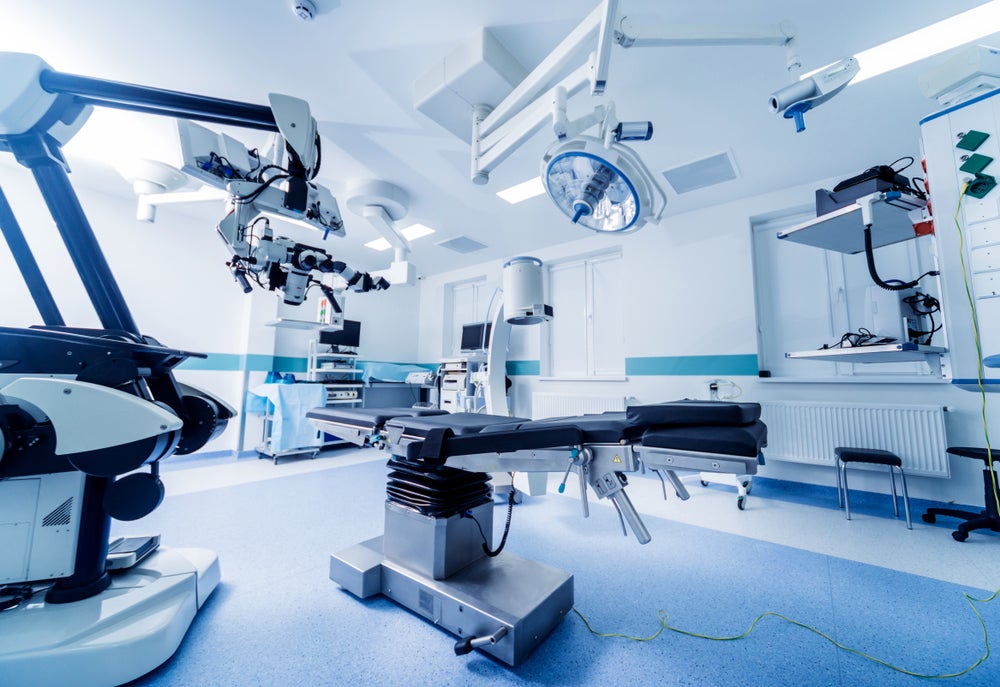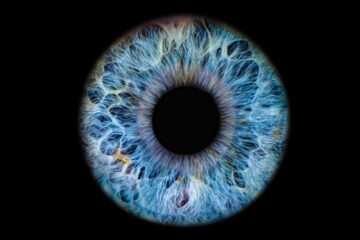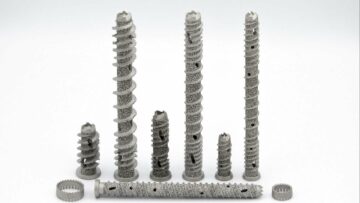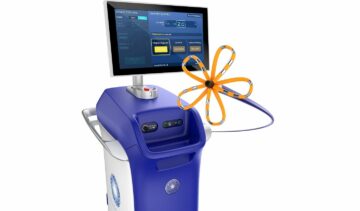<!–
–>

At least for those manufacturers that struggled for a long time printing Instructions for Use (IFU’s) without seeing the benefit. Manufacturers of devices such as medical device software, medical devices fitted with a built-in system visually able to display the IFU visually, fixed installed medical devices and implantable and active implantable medical devices.
But what is expected from the manufacturer to comply with this regulation and the medical device regulation (EU) 2017/745?
What do they mean by accessories?
Who is defined as a professional user?
Clarifying these questions is essential for manufacturers who want to stay on the right side of the rules.
Regulation 2021/2226 highlights
The regulation 2021/2226 specifies which medical devices an e-IFU is approved to be the sole IFU – meaning no paper IFU is required. The goal is to decrease the environmental burden and reduce costs linked to paper IFU’s. It also aims to retain and improve levels of safety, with users still able to receive a paper IFU upon request.
Article 3 is the most interesting. It specifies which devices can benefit from the paper IFU exemption.
Implantable and active implantable medical devices and their accessories (cfr. MDR) are covered. But only under the following conditions:
- Devices and accessories are used by professionals
- The use by other persons is not reasonably foreseeable
An e-IFU is only allowed if the risk assessment covers elements including knowledge and experience, the environment in which the device is used and protection against tampering.
Medical device regulation (EU) 2017/745 highlights
What is the link with the MDR?
The MDR is the umbrella under which regulation 2021/2226 falls. It gives the manufacturer detailed explanations on the different definitions. In addition, it provides insights on the elements needed in the IFU and e-IFU (MDR, annex I, chapter III).
Those definitions are as follows:
‘Instructions for use’ means the information provided by the manufacturer to inform the user of a device’s intended purpose, proper use and of any precautions to be taken;
“Implantable device” means any device – including a partially or wholly absorbed one – intended either for introduction into the human body or for replacement of an epithelial surface or the surface of the eye. An implantable device is introduced via clinical intervention and remains in place after the procedure. Devices that are partially introduced by clinical intervention and remain in place for a month or more also meet the definition.”
‘Active device’ means any device the operation of which depends on a source of energy other than that generated by the human body for that purpose, or by gravity, and which acts by changing the density of or converting that energy. However, devices that transmit energy or substances between an active device and the patient without any significant change do not meet the definition. Software is also deemed to be an active device.
An accessory for a medical device is defined in relation to true medical devices: it must be used together with one or more medical devices to enable their use, in accordance with their intended purpose. It may also specifically and directly assist the medical functionality of the medical device in terms of its intended purpose.
For many manufacturers though, the definition of ‘accessory for a medical device’ causes much confusion for a number of important reasons.
First of all, not every instrument that is used during an implant surgery is automatically an accessory. It must enable or assist the device in its intended purpose. For example, a trial model, used during surgery, in order for the surgeon to check whether or not the proposed implant will fit inside the body. This model is used prior to placing the implant itself, for sterility reasons. Although this model is a medical device, and briefly an invasive one, it does not enable or assist the implant itself.
Tools used during the surgery such as saws, drills and guides to position the screws are another example. Although used in assisting the surgery, they do not enable or assist the implant in its intended purpose.
However, the screws used to place the implant do not have any other function aside from enabling the implant to stay in its place – and are therefore an accessory for an implant. It is the intended purpose of the screws that means they are defined as accessories for an implant, or a medical device on its own. This definition and the explanation of it must be clearly defined in a definition statement or classification rationale, as part of the technical documentation.
Dental implants have many accessories such as rings, caps, housings.
Clear examples, which the MDCG notes, are accessories for cochlear implants.
Accessories to active implantable devices, with or without contact to the heart, are another example, whether or not they are implantable:
· torque wrench for pulse generators and cardioverter defibrillators
· cables for programmer / pacing system analyser
· magnets for pulse generators and cardioverter generators
· programmers to control an implantable device
· implantable pacemaker leads
If it is clear that your device is an accessory for a medical device, it must also comply with the whole of the MDR in the same way as a medical device. This means it also needs full technical documentation – including an IFU. The manufacturer should have a clear definition statement, including a classification rationale, to clearly identify why it is an accessory for a medical device.
Additionally, the manufacturer should have a written rationale if they are opting purely for an e-IFU. It is important to note that a rationale on its own is insufficient; a thorough risk analysis on the use of an e-IFU and lack of paper IFU is required.
Conclusion
Even though the new regulation on e-IFU is clear, it is not always clear for manufacturers if their device meets the definitions. The medical device regulation sheds some light on the definitions, but it is up to the manufacturer to make sure their devices meet these definitions. It is a requirement to have a rationale on the definition of medical device and accessory for a medical device.
So making sure that the device meets the correct definition is the first step forward. The second step is to rationalise the exemption for having a mandatory paper IFU.
Qarad is an expert in e-IFU. And for regulatory related questions, QbD has a team of regulatory experts to guide you through the regulations. Download the whitepaper on this page to find out more.
- SEO Powered Content & PR Distribution. Get Amplified Today.
- Platoblockchain. Web3 Metaverse Intelligence. Knowledge Amplified. Access Here.
- Source: https://www.medicaldevice-network.com/sponsored/e-ifu-requirements-translated-for-implantable-medical-devices/
- :is
- $UP
- a
- Able
- accessories
- accessory
- active
- acts
- addition
- After
- against
- aims
- All
- Although
- always
- analysis
- and
- Annex
- Another
- approved
- ARE
- AS
- assist
- automatically
- BE
- benefit
- between
- body
- briefly
- built-in
- burden
- by
- cables
- CAN
- caps
- causes
- change
- changing
- Chapter
- check
- classification
- clear
- clearly
- Clinical
- conditions
- confusion
- contact
- control
- Costs
- covered
- covers
- decrease
- defined
- density
- depends
- detailed
- device
- Devices
- different
- directly
- Display
- documentation
- download
- during
- either
- elements
- enable
- enabling
- energy
- Environment
- environmental
- essential
- EU
- Every
- example
- examples
- expected
- experience
- expert
- experts
- explanation
- eye
- Falls
- Find
- First
- fit
- fixed
- following
- follows
- For
- Forward
- from
- full
- function
- generated
- generators
- gives
- goal
- gravity
- guide
- Guides
- Have
- having
- Heart
- Hidden
- However
- HTTPS
- human
- i
- identify
- important
- improve
- in
- Including
- inform
- information
- insights
- installed
- instructions
- instrument
- interesting
- intervention
- introduced
- Introduction
- IT
- ITS
- itself
- jpg
- knowledge
- Lack
- levels
- light
- LINK
- linked
- Long
- long time
- Magnets
- make
- Making
- mandatory
- Manufacturer
- Manufacturers
- many
- MDR
- meaning
- means
- medical
- medical device
- medical devices
- Meet
- Meets
- model
- Month
- more
- most
- needed
- needs
- New
- Notes
- number
- of
- on
- ONE
- operation
- opting
- order
- Other
- own
- page
- Paper
- part
- patient
- persons
- Place
- placing
- plato
- Plato Data Intelligence
- PlatoData
- position
- Prior
- professional
- Programmer
- Programmers
- proposed
- protection
- provided
- provides
- pulse
- purely
- purpose
- Questions
- reasons
- receive
- reduce
- Regulation
- regulations
- regulatory
- related
- relation
- remain
- remains
- request
- required
- requirement
- Requirements
- retain
- Risk
- rules
- Safety
- same
- Second
- seeing
- Share
- should
- significant
- Software
- some
- Source
- Sponsored
- Statement
- stay
- Step
- Still
- such
- Surface
- Surgery
- system
- team
- Technical
- terms
- that
- The
- the information
- their
- therefore
- These
- Through
- time
- to
- together
- transmit
- trial
- true
- umbrella
- under
- use
- User
- users
- via
- Way..
- What
- What is
- whether
- which
- Whitepaper
- WHO
- wholly
- will
- with
- without
- Wrench
- written
- Your
- zephyrnet












